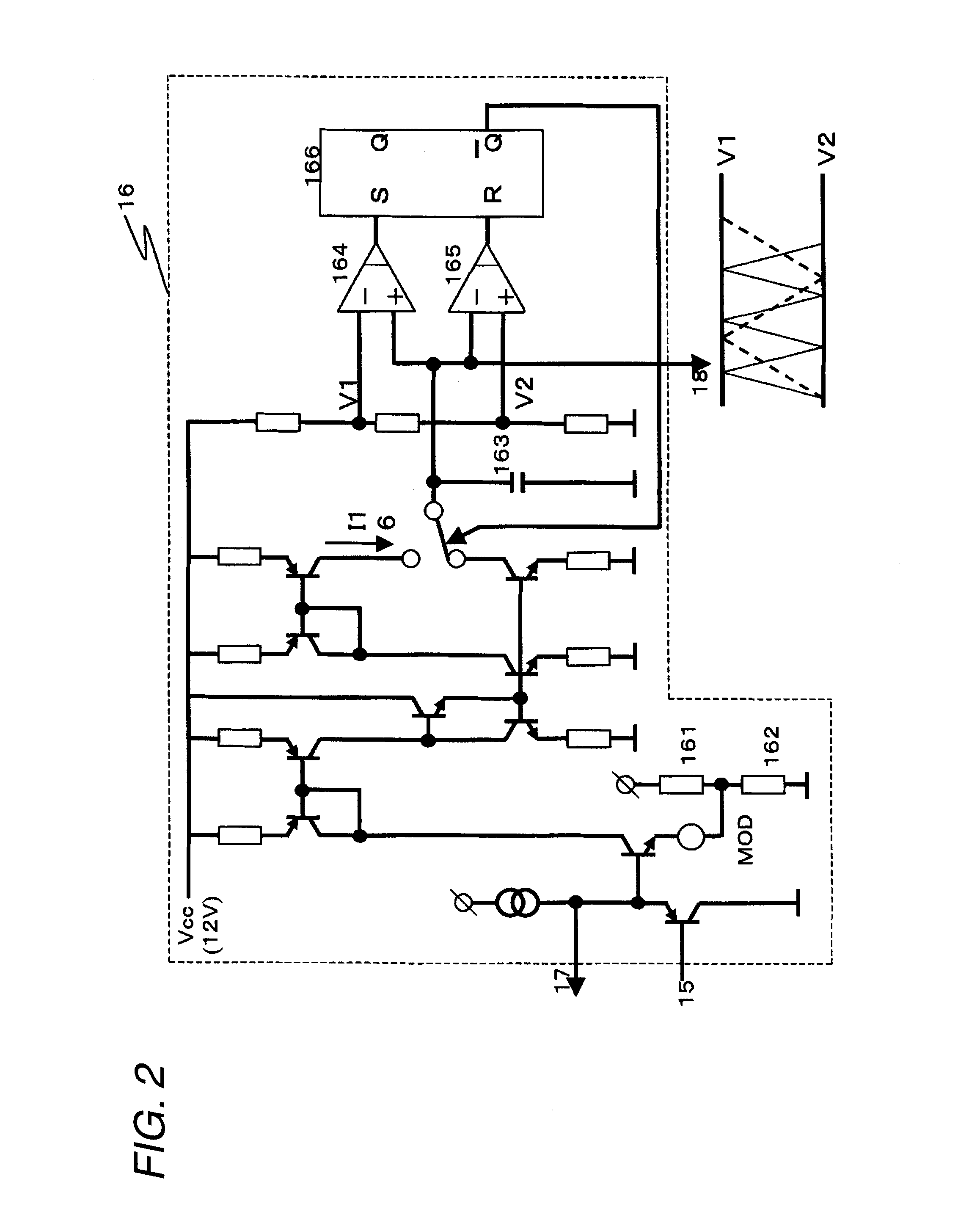High Frequency Heating Apparatus
a heating apparatus and high frequency technology, applied in the direction of dc-ac conversion without reversal, electric/magnetic/electromagnetic heating, sustainable buildings, etc., can solve the problems of shortening the cooking time, affecting the efficiency of the heating apparatus, and consuming as much as 2000 watts of the microwave oven, so as to achieve the effect of easy formation of frequency modulation waveform
- Summary
- Abstract
- Description
- Claims
- Application Information
AI Technical Summary
Benefits of technology
Problems solved by technology
Method used
Image
Examples
first embodiment
[0069]FIG. 1 is a diagram illustrating a circuit configuration for driving a magnetron according to the invention. A DC power supply 1, a leakage transformer 2, a first semiconductor switching element 3, a second semiconductor switching element 4, a first capacitor 5, a second capacitor 6, a third capacitor 7, a driving control IC unit 14, a full-wave voltage doubler rectifcation circuit 11, and a magnetron 12 constitute the overall circuit. The description of the overall circuit configuration will be omitted since it is the same as that shown in FIG. 12.
[0070] In the driving control IC unit 14 for driving the semiconductor switching elements 3 and 4, a frequency modulation-forming circuit 15 forms a frequency modulation waveform using a resistance divided waveform on the basis of the voltage of a commercial power supply. The frequency modulation-forming circuit 15 performs a feedback control receiving signals from a constant input control circuit 19 so as to obtain the desired inp...
second embodiment
[0074]FIG. 4 is an exemplary diagram illustrating the frequency modulation-forming circuit 15 in detail shown in FIG. 1. The fixed voltage obtained in the resistors 151 and 152 becomes the upper limit on the basis of the voltage dividing waveform after the commercial power supply is rectified (Aspects 3 and 8). FIG. 6(a) shows the frequency modulation waveform in this time. On the basis of the commercial power rectifying voltage-dividing waveform indicated by the dashed line, the upper limit value is given as indicated by the solid line. Next, when diodes 158 and 159, and resistors 155, 156, and 157 are provided to an upper clamp shown in FIG. 5, the frequency modulation waveform can be formed as a curved line with some variation from reference voltage given in the resistors 151 and 152, not the fixed value (Aspect 9). FIG. 6(b) shows the curved line indicated by the solid line. In addition, in order to determine the upper limit as a variable value not a fixed value, an increase or ...
third embodiment
[0075]FIG. 7 is an exemplary diagram illustrating the frequency modulation-forming circuit 15 shown in FIG. 1. The lower limit value is restricted to the fixed voltage given from the resistors 153 and 154 on the basis of a voltage-dividing waveform after rectifying the commercial power supply. In this case, the lower limit clamp means the lower limit value corresponding to the lowest frequency restriction (Aspects 4, 5, 12, and 16). FIG. 9(a) shows the frequency modulation waveform in this case, and the lower limit (lower limit corresponding to the lowest frequency) indicated by the solid line is denoted on the basis of the commercial power rectifying voltage-dividing waveform indicated by the dashed line. Next, when a resistor is provided to the lower limit clamp shown in FIG. 8, the frequency modulation waveform can be formed as a curved line with some variation from the reference voltage obtained in the resistors 153 and 154 not a fixed value (Aspect 13). FIG. 9(b) shows the curv...
PUM
 Login to View More
Login to View More Abstract
Description
Claims
Application Information
 Login to View More
Login to View More - R&D
- Intellectual Property
- Life Sciences
- Materials
- Tech Scout
- Unparalleled Data Quality
- Higher Quality Content
- 60% Fewer Hallucinations
Browse by: Latest US Patents, China's latest patents, Technical Efficacy Thesaurus, Application Domain, Technology Topic, Popular Technical Reports.
© 2025 PatSnap. All rights reserved.Legal|Privacy policy|Modern Slavery Act Transparency Statement|Sitemap|About US| Contact US: help@patsnap.com



